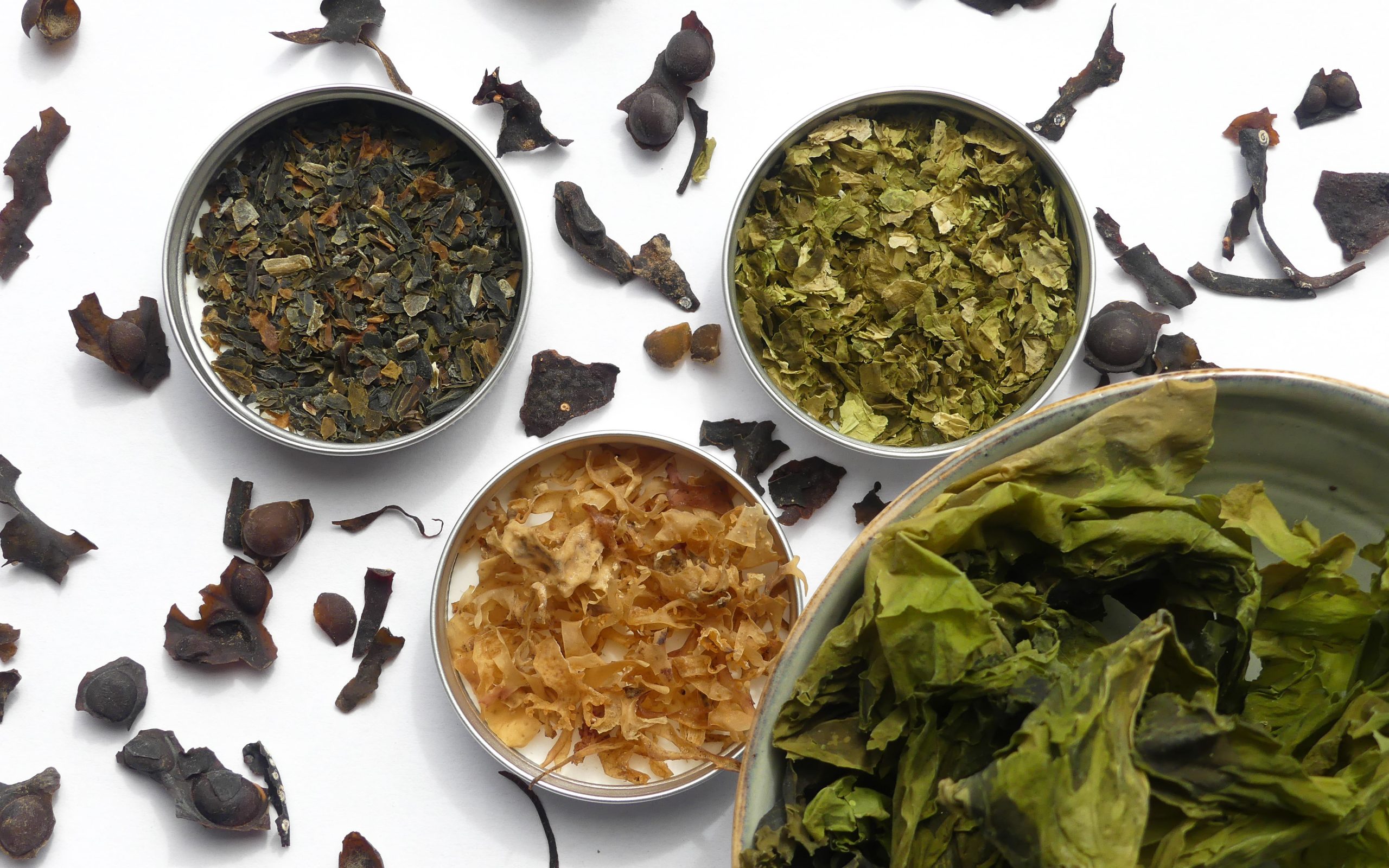In Europe, algae are often associated with sushi and Japanese cuisine, but their use is much broader. It can be eaten raw, boiled, baked, grilled, pureed, dried or fried. But it can also be used on its own or in many hot or cold dishes.
How to prepare algae?
The seaweed sold fresh are preserved in coarse salt which must be removed. They should be plunged into a bowl of water, stirred to remove the salt, then transferred to another bowl of water and left to soak for a few minutes. This desalting time varies from one algae to another (2 to 10 minutes). It is advisable to taste them regularly and to remove them when their taste is iodized and no longer salty.
Algae sold dry can be rehydrated very easily, either in water or in a liquid that will be incorporated into the recipe. (For example: lemon juice, white wine, oil, etc.) It is advisable to start the rehydration process in the most acidic liquid, as this will open up the walls of the algae, releasing the nutrients and flavours, and to finish with the most viscous.
Once the algae have been desalted or rehydrated, they should be cut with scissors or a sharp knife, but not chopped in a blender as they are very resistant!
How to cook algae?
For those who are not familiar with algae, it is best to get used to its flavours and textures by adding small amounts to dishes. For example, as a seasoning, seaweed can replace salt, enhance flavours and provide minerals and vitamins.
Many algae, such as nori, wakame or dulse, become so crumbly when grilled that they crumble in the mouth and absorb the slightest moisture. They can then be eaten like crisps.
Some of the tougher and more flavourful brown algae, such as sugar kelp or bladder wrack, can be simmered and served in soup or broth. They provide umami flavour, salt and a bound texture thanks to their fibres (alginates).
Another lesser-known but long-established use is the preparation of infusions of brown algae such as bladder wrack and knotted wrack, which are prepared as infusions. But it is possible to prepare infusions from any dry algae (dulse, sugar kelp, sea lettuce, etc.). The algae rehydrated in hot water will release their minerals and amino acids, as well as a more or less powerful smell. These infusions can be enhanced with green tea leaves, lemon juice, or honey for example, depending on taste.
Other algae such as sea-thong and wakame are popular as garnish and accompaniment to dishes. After a quick soaking and sufficient cooking time (10 minutes in water or steam), sea beans and wakame turn green and easily accompany red meat and fish.
Finally, algae can also be used in desserts or sweet preparations:
- dulse and sea lettuce are used in juices and smoothies,
- sea lettuce balances the sweetness of a biscuit with its fresh note,
- sea-thong can be candied,
- and some shops even offer wakame jam!
______
BIBLIOGRAPHY :
[1] MOURITSEN O. G. 2015. Algues marines – Propriétés, usages, recettes. Paris, Éditions Delachaux et Niestlé, 304 pages.
[2] QUEVA, Régine. 2019. Les supers pouvoirs des algues. Larousse. 144 pages.
